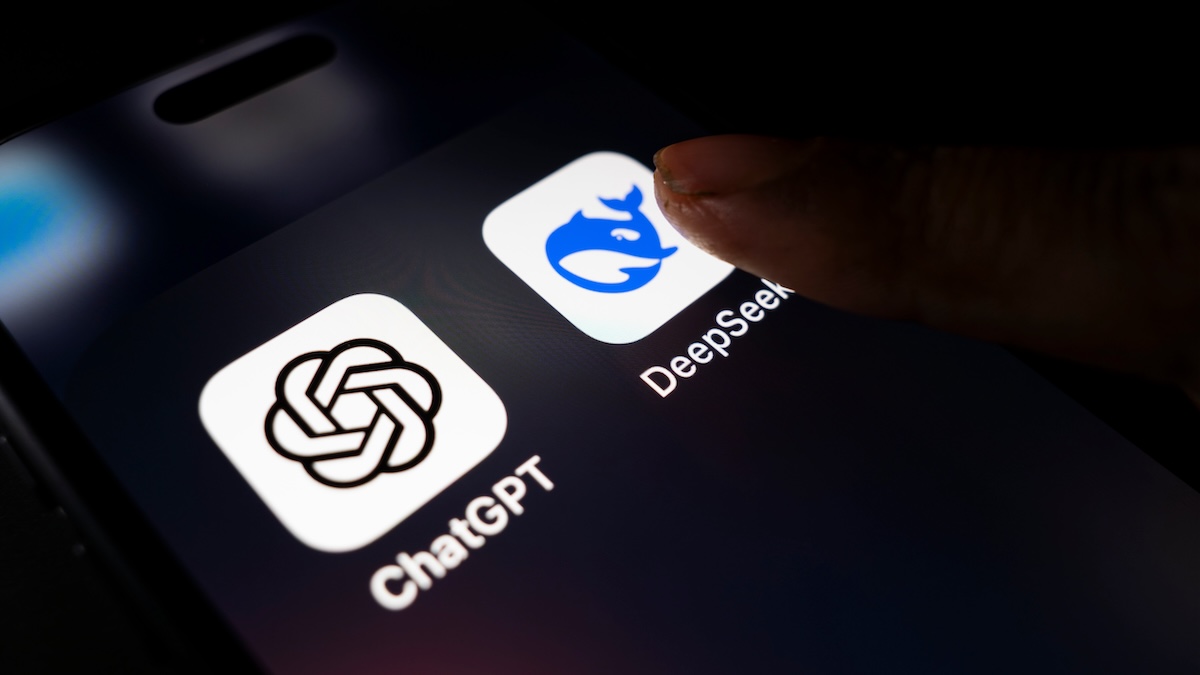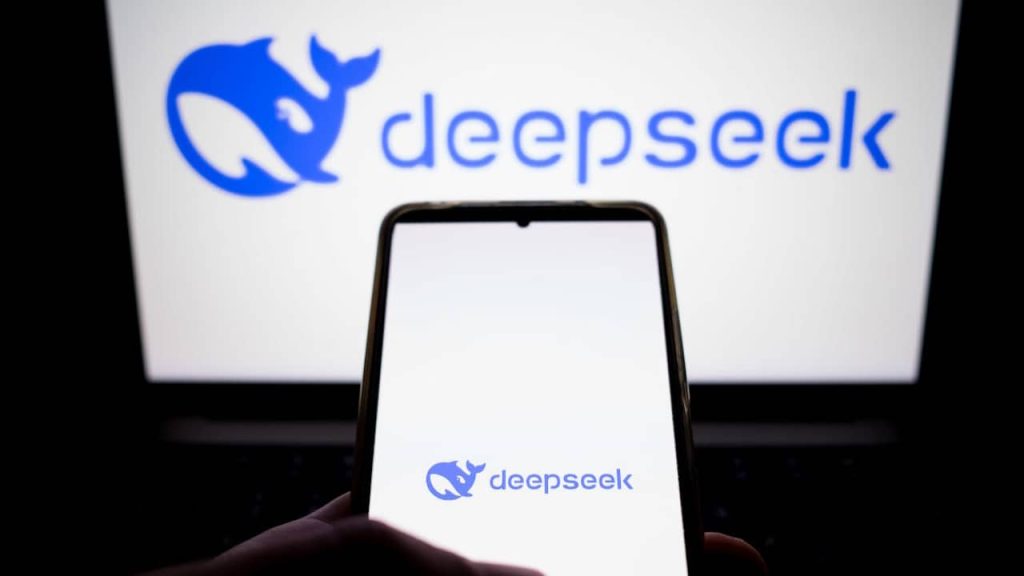 They are also anticipated to get approval inside their group upfront for the purpose of AI use and the scope of customers. This efficiency may be crucial for customers needing quick responses. And as you can tell from the graphs, all of this happened quickly. The vast quantities of knowledge collected by means of these networks allow personal AI companies to create superior algorithms, which can then be tailored for commercial uses, doubtlessly accelerating financial development. It's an unsurprising comment, however the observe-up assertion was a bit more complicated as President Trump reportedly said that DeepSeek's breakthrough in more environment friendly AI "may very well be a constructive as a result of the tech is now also out there to U.S. companies" - that's not exactly the case, though, as the AI newcomer is not sharing these particulars just yet and is a Chinese owned firm. Right. And the final critical level of technological breakthrough is the more durable one as a result of policy, it is within management of policymakers.
They are also anticipated to get approval inside their group upfront for the purpose of AI use and the scope of customers. This efficiency may be crucial for customers needing quick responses. And as you can tell from the graphs, all of this happened quickly. The vast quantities of knowledge collected by means of these networks allow personal AI companies to create superior algorithms, which can then be tailored for commercial uses, doubtlessly accelerating financial development. It's an unsurprising comment, however the observe-up assertion was a bit more complicated as President Trump reportedly said that DeepSeek's breakthrough in more environment friendly AI "may very well be a constructive as a result of the tech is now also out there to U.S. companies" - that's not exactly the case, though, as the AI newcomer is not sharing these particulars just yet and is a Chinese owned firm. Right. And the final critical level of technological breakthrough is the more durable one as a result of policy, it is within management of policymakers.
 AI insiders and Australian policymakers have a starkly different sense of urgency around advancing AI capabilities. "It’s clear that they have been exhausting at work since. How does this work? To this finish, the National AI Team, composed of 23 leading personal enterprises, has developed the National AI Open Innovation Platform, which supplies open access to AI datasets, toolkits, libraries and other computing assets. Companies similar to Google and Meta, regardless of promoting open-supply initiatives, still rely heavily on closed-source strategies that limit broader access and collaboration. Unlike the West, the place companies like Google and Meta promote open-source fashions for strategic business gains, China sees them as a technique of national technological self-sufficiency. Unlike the US, where proprietary AI fashions dominated, China embraced open-supply ecosystems to bypass Western gatekeeping, to scale innovation faster and to embed itself in global AI collaboration. But not like within the US, China’s AI ecosystem thrives on a fancy interplay between state help, corporate investment and educational collaboration. Where once Silicon Valley was the epicentre of world digital innovation, its company behemoths now appear susceptible to extra progressive, "scrappy" startup opponents - albeit ones enabled by major state funding in AI infrastructure. DeepSeek Ai Chat’s emergence has sparked intense debate across the AI industry, drawing a range of reactions from main Silicon Valley executives, policymakers and researchers.
AI insiders and Australian policymakers have a starkly different sense of urgency around advancing AI capabilities. "It’s clear that they have been exhausting at work since. How does this work? To this finish, the National AI Team, composed of 23 leading personal enterprises, has developed the National AI Open Innovation Platform, which supplies open access to AI datasets, toolkits, libraries and other computing assets. Companies similar to Google and Meta, regardless of promoting open-supply initiatives, still rely heavily on closed-source strategies that limit broader access and collaboration. Unlike the West, the place companies like Google and Meta promote open-source fashions for strategic business gains, China sees them as a technique of national technological self-sufficiency. Unlike the US, where proprietary AI fashions dominated, China embraced open-supply ecosystems to bypass Western gatekeeping, to scale innovation faster and to embed itself in global AI collaboration. But not like within the US, China’s AI ecosystem thrives on a fancy interplay between state help, corporate investment and educational collaboration. Where once Silicon Valley was the epicentre of world digital innovation, its company behemoths now appear susceptible to extra progressive, "scrappy" startup opponents - albeit ones enabled by major state funding in AI infrastructure. DeepSeek Ai Chat’s emergence has sparked intense debate across the AI industry, drawing a range of reactions from main Silicon Valley executives, policymakers and researchers.
Former US secretary of state Mike Pompeo has framed DeepSeek’s emergence as a "shot across America’s bow," urging US policymakers and tech executives to take speedy action. Moreover, state funding often serves as a sign for subsequent private-sector funding, reinforcing the country’s AI ecosystem. In this manner, DeepSeek completely encapsulates "AI with Chinese characteristics" - a fusion of state steering, non-public-sector ingenuity and open-source collaboration, all carefully managed to serve the country’s long-time period technological and geopolitical goals. If you ask DeepSeek Chat V3 a query about DeepSeek’s API, it’ll provide you with instructions on how to use OpenAI’s API. DeepSeek’s rapid rise underscores a rising realization: Globally, we are coming into a probably new AI paradigm, one in which China’s mannequin of open-source innovation and state-backed improvement is proving simpler than Silicon Valley’s company-driven strategy. Through the years I've studied China’s evolving tech panorama, observing firsthand how its unique mix of state-pushed industrial coverage and personal-sector innovation has fueled speedy AI development. Founded by Chinese entrepreneur Liang Wenfeng in 2023, DeepSeek has positioned itself as an AI leader while benefiting from China’s state-driven AI ecosystem.
Recognizing the potential of open-supply AI early on, Tsinghua University in Beijing has emerged as a key innovation hub, producing main AI startups corresponding to Zhipu AI, Baichuan AI, Moonshot AI and MiniMax - all founded by its college and alumni. Instead, the federal government has embraced a more flexible and collaborative strategy that encourages open-source software program adoption, a diverse community of AI companies and public-personal partnerships to accelerate innovation. China’s AI strategy is constructed on a dual basis of state-led initiatives and personal-sector innovation. While companies like Google and Meta promoted open-supply initiatives in identify, they still locked key AI capabilities behind paywalls and restrictive licenses. In contrast, China’s government-backed initiatives have handled open-source AI as a nationwide useful resource, reasonably than a corporate asset. Indeed, authoritarian regimes could have a major advantage in growing facial-recognition expertise attributable to their intensive surveillance methods. But the potential for US firms to additional build on Chinese open-supply know-how could also be restricted by political as well as company limitations. I consider this moment could come to be seen as a turning level not only for AI however for the geopolitical order.
